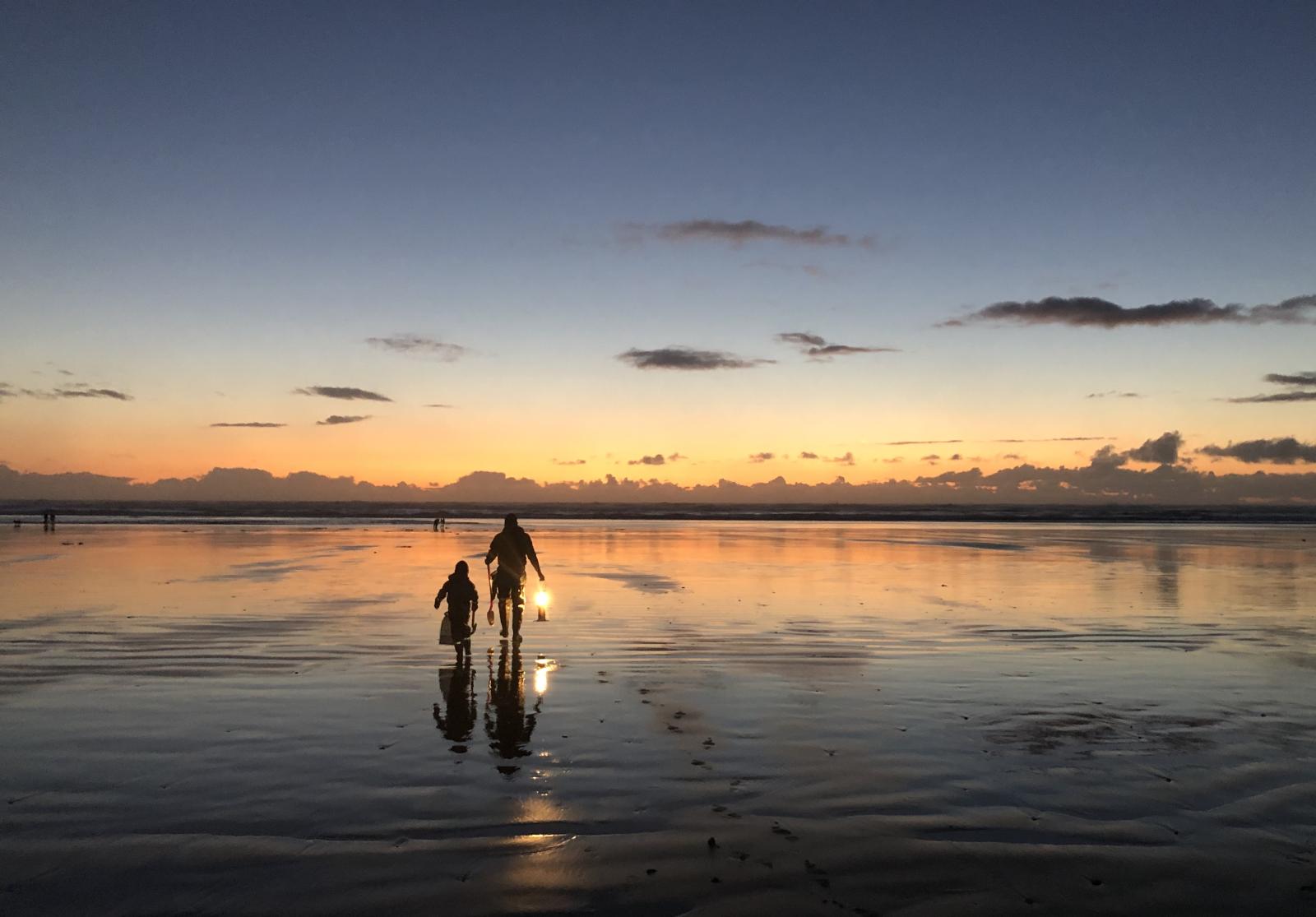ARCHIVED NEWS RELEASE
This document is provided for archival purposes only. Archived documents
do not reflect current WDFW regulations or policy and may contain factual
inaccuracies.
News release Feb. 15, 2024
Contact: Bryce Blumenthal, 360-249-4628, ext. 232
Media contact: Mark Yuasa, 360-902-2262

OLYMPIA – Razor clam diggers can look forward to more opportunities on coastal beaches beginning Feb. 21, Washington Department of Fish and Wildlife (WDFW) coastal shellfish managers confirmed today.
“This next round of February dates should offer plenty of daylight harvest opportunity, just like the last tide series earlier this month,” said Bryce Blumenthal, a WDFW coastal shellfish biologist. “Hopefully the swell and weather cooperate to allow for lots of successful digging."
Not all coastal beaches are open for every dig, so diggers are encouraged to make sure their intended destination is open before heading out. Optimal digging occurs between one and two hours before the listed time of low tide.
The following digs during afternoon and evening low tides (noon to midnight only) will proceed as scheduled, after marine toxin results from the Washington State Department of Health (DOH) showed razor clams are safe to eat:
- Feb. 21, Wednesday, 4:56 p.m.; 0.2 feet; Long Beach, Twin Harbors, Mocrocks
- Feb. 22, Thursday, 5:33 p.m.; 0.1 feet; Long Beach, Twin Harbors, Mocrocks
- Feb. 23, Friday, 6:05 p.m.; 0.1 feet; Long Beach, Twin Harbors, Copalis
- Feb. 24, Saturday, 6:34 p.m.; 0.2 feet; Long Beach, Twin Harbors, Copalis
- Feb. 25, Sunday, 7:02 p.m.; 0.4 feet; Long Beach, Mocrocks
Tentative dates during evening (noon to midnight only) low tides in March:
- March 7, Thursday, 4:15 p.m.; -0.5 feet; Long Beach, Twin Harbors, Copalis
- March 8, Friday, 5:00 p.m.; -0.8 feet; Long Beach, Twin Harbors, Mocrocks
- March 9, Saturday, 5:42 p.m.; -0.9 feet; Long Beach, Twin Harbors, Mocrocks
- March 10, Sunday, 7:22 p.m.; -0.7 feet; Long Beach, Twin Harbors, Copalis
- March 11, Monday, 8:00 p.m.; -0.2 feet; Long Beach, Twin Harbors, Copalis
Tentative dates during morning/early afternoon (4 a.m. to 4 p.m. only) low tides from March 12-17:
- March 12, Tuesday, 8:33 a.m.; -0.3 feet; Long Beach, Mocrocks
- March 13, Wednesday, 9:21 a.m.; -0.4 feet; Long Beach, Mocrocks
- March 14, Thursday, 10:12 a.m.; -0.3 feet; Long Beach, Mocrocks
- March 15, Friday, 11:08 a.m.; 0.1 feet; Copalis (Ocean Shores Razor Clam Festival)
- March 16, Saturday, 12:10 p.m.; 0.5 feet; Copalis (Ocean Shores Razor Clam Festival)
- March 17, Sunday, 1:23 p.m.; 0.9 feet; Mocrocks (Ocean Shores Razor Clam Festival)
Tentative dates during morning (midnight to noon only) low tides in March:
- March 26, Tuesday, 7:54 a.m.; 0.7 feet; Copalis
- March 27, Wednesday, 8:26 a.m.; 0.4 feet; Long Beach, Mocrocks
- March 28, Thursday, 9:01 a.m.; 0.3 feet; Long Beach, Twin Harbors, Mocrocks
- March 29, Friday, 9:39 a.m.; 0.3 feet; Long Beach, Twin Harbors, Copalis
- March 30, Saturday, 10:23 a.m.; 0.4 feet; Long Beach, Twin Harbors, Copalis
- March 31, Sunday, 11:16 a.m.; 0.6 feet; Long Beach, Twin Harbors, Mocrocks
The DOH requires test samples for marine toxins, and domoic acid levels must fall under the guideline level before a beach can open for digging. Domoic acid, a natural toxin produced by certain types of marine algae, can be harmful or fatal if consumed in sufficient quantities. Final approval usually occurs about a week or less – sometimes two to three days – before the start of each digging series. More information about domoic acid, as well as current levels at ocean beaches, can be found on the WDFW’s domoic acid webpage
On all open beaches, the daily limit is 15 clams per person. Each digger’s clams must be kept in a separate container, and all diggers must keep the first 15 clams they dig, regardless of size or condition, to prevent waste.
All diggers 15 or older must have an applicable fishing license to harvest razor clams on any beach. Licenses can be purchased from WDFW’s licensing website, and from hundreds of license vendors around the state. WDFW recommends buying your license before visiting coastal beach communities. Additional razor clam information is available on the WDFW razor clam webpage.
The Washington Department of Fish and Wildlife works to preserve, protect, and perpetuate fish, wildlife and ecosystems while providing sustainable fish and wildlife recreational and commercial opportunities.
